Japan’s culinary culture has captivated palates worldwide, with its unique flavors, meticulous preparation, and aesthetic presentation. Among its vast array of dishes, the humble noodle plays a central role. Particularly, Udon and Soba noodles, two of Japan’s most beloved noodle types, have risen in global popularity. However, despite their common use in Japanese cuisine, they present distinct characteristics in terms of origins, texture, taste, and nutritional value. In this comprehensive guide, we will delve into the fascinating world of Udon and Soba noodles, drawing a clear line between these two iconic noodle types and helping you understand their unique charm.
Main Differences Between Udon vs Soba Noodles:
The main difference between Udon and Soba noodles lies in the ingredients from which they are made. Udon noodles are crafted from wheat flour, giving them a distinctively soft, chewy texture and a neutral flavor profile that pairs seamlessly with various ingredients. On the other hand, Soba noodles are primarily made from buckwheat flour, lending them a firm texture and a subtle, nutty flavor that sets them apart.
Flour Composition and Color:
Udon noodles are typically white and thicker due to the wheat flour, while Soba noodles, made mostly from buckwheat, are thinner and have a brownish hue.
Taste and Texture:
Udon’s thicker, chewy texture and bland taste make it versatile for rich, hearty broths. Soba, however, is firm and flavorful, often served cold with a dipping sauce.
Nutritional Values:
While both are healthy options, the buckwheat in Soba noodles gives them a higher protein content and a lower calorie count compared to Udon noodles.
Typical Dishes:
Different traditional Japanese dishes feature these noodles. For instance, Udon often stars in ‘Kitsune Udon’, whereas Soba shines in ‘Zaru Soba’.
The Origins: Udon Noodles vs Soba Noodles
In the culinary world, it’s said that knowing the origins of food gives a deeper appreciation of the flavors. Udon and Soba noodles have their roots steeped deep in Japanese history and culture.
Udon noodles are believed to have originated from China, brought to Japan around the Nara period (710-794 CE). Their popularity grew during the Edo period (1603-1868) when Sanuki and Mizusawa Udon were established as the three famous Udon types, leading to the diversity of Udon dishes available today.
Soba, on the other hand, has a more ambiguous origin story. It is speculated that Soba has been part of the Japanese diet since the Jomon period (10,000-300 BC), with the custom of eating Soba on New Year’s Eve being a tradition dating back to the Edo period. Unlike Udon, Soba is more prevalent in cold, mountainous regions where buckwheat thrives better than rice.
Distinguishing Features of Udon Noodles
Udon noodles are distinctive for their thickness and white color, mainly due to the wheat flour used in their making. This contributes to their smooth texture and neutral flavor. Typically, they are round, although there are variations depending on the region in Japan.
Udon noodles are celebrated for their versatility. They can be served hot in a mild soy-based broth or cold with a dipping sauce, often garnished with green onions and tempura. In terms of texture, Udon noodles are soft, thick, and chewy, making them perfect for soaking up the flavors of the broth or sauce they’re served with.
Key Characteristics of Soba Noodles
Soba noodles are thin, straight noodles, ranging in color from light to dark brown, due to the buckwheat flour used to make them. In fact, the word ‘Soba’ itself means buckwheat in Japanese. Some varieties may mix wheat and buckwheat flour, which results in lighter colored noodles.
The flavor profile of Soba noodles is more distinct than that of Udon. They have a nutty, slightly earthy flavor that is robust enough to stand alone. Because of this, Soba noodles are often served chilled with a dipping sauce on the side, although hot Soba soups are also popular.
In terms of texture, Soba noodles have a firm, almost grainy feel, giving a pleasing bite contrasted against their delicate size. They are also well-known for their health benefits, being rich in protein, fiber, and essential nutrients like manganese and thiamine.
Texture and Taste: Udon Noodles vs Soba Noodles
Texture and taste are two pivotal factors when it comes to distinguishing between Udon and Soba noodles. Udon noodles are renowned for their thick, soft, and chewy texture. They are usually white or cream-colored and have a neutral, subtly wheaty taste, making them excellent carriers for stronger flavors in various dishes.
Conversely, Soba noodles have a unique, slightly grainy texture due to their buckwheat composition. These thin, brown noodles carry a distinctive nutty flavor, which is a beloved characteristic that allows Soba to shine even in simple dishes. Whether served hot or cold, the taste of Soba remains robust and pleasingly earthy.
Nutritional Comparison: Udon vs Soba Noodles
When it comes to nutrition, both Udon and Soba noodles present beneficial aspects, although Soba tends to edge out in terms of health benefits. Udon noodles, being made of wheat, are high in carbohydrates and provide a good source of energy. However, they are relatively lower in protein and fiber.
Soba noodles, made mainly from buckwheat, are high in protein and fiber, which are essential for a balanced diet. They also offer essential nutrients, such as manganese and thiamine. Moreover, Soba noodles generally have fewer calories than Udon, making them a favored choice for those monitoring their caloric intake.
Popular Dishes: Udon and Soba Noodles
Both Udon and Soba noodles feature in a variety of popular Japanese dishes, each showcasing their unique characteristics. Some well-loved Udon dishes include ‘Kitsune Udon’ (Udon with sweet fried tofu) and ‘Tempura Udon’ (Udon with tempura toppings), where the soft, chewy Udon pairs well with the rich broths and flavorful toppings.
Soba dishes, on the other hand, range from ‘Zaru Soba’ (chilled Soba noodles served with a dipping sauce) to ‘Yaki Soba’ (stir-fried Soba noodles with meat and vegetables). The nutty, earthy flavor of Soba noodles makes them enjoyable even in minimalist dishes, highlighting their standalone flavor.
How to Make the Right Choice: Udon or Soba Noodles
Choosing between Udon and Soba depends on your personal taste preference, dietary requirements, and the dish you intend to make. If you prefer a thick, chewy noodle and a neutral base that readily absorbs the flavor of its accompaniments, then Udon would be your choice. On the other hand, if you’re looking for a thinner, firmer noodle with a distinctive flavor that can shine on its own, then Soba would be the way to go.
If health factors are a consideration, Soba, with its higher protein, fiber content, and lower calorie count, might be more suitable. However, if you’re more focused on the taste and texture experience, then it’s all up to your personal preference.
What are Udon and Soba noodles made from?
A: Udon noodles are made from wheat flour, giving them a neutral taste and soft, chewy texture. Soba noodles are primarily made from buckwheat flour, imparting them with a nutty flavor and a firmer, grainy texture. Some Soba varieties might include a mix of wheat and buckwheat flour.
How are Udon and Soba noodles typically served?
A: Udon noodles are versatile and can be served either hot in a mild, soy-based broth or cold with a dipping sauce. They are often garnished with green onions and tempura. Soba noodles, due to their distinctive flavor, can be enjoyed both in hot broths and served cold with a dipping sauce.
Which is healthier, Udon or Soba?
A: Both Udon and Soba offer health benefits, but Soba generally has the upper hand due to its buckwheat composition. Soba noodles are high in protein, fiber, and essential nutrients like manganese and thiamine. Additionally, they have fewer calories compared to Udon, making them a favored choice for those keeping an eye on their calorie intake.
What is the main difference between Udon and Soba noodles?
A: The main difference lies in the ingredients and the resulting texture and flavor. Udon, made from wheat flour, is soft, thick, and chewy with a neutral flavor. Soba, primarily made from buckwheat flour, is thinner, grainier, and has a robust, nutty flavor.
Where do Udon and Soba noodles originate from?
A: Both noodles originate from Japan, with Udon thought to have been introduced from China. Udon’s popularity grew during the Edo period, while Soba has been part of the Japanese diet potentially since the Jomon period, making them integral parts of Japanese cuisine.
Can Udon and Soba noodles be used interchangeably in recipes?
A: It depends on the recipe. While they’re both types of noodles, their distinct flavors and textures might significantly alter the dish’s outcome. Udon, being mild and chewy, works well in hearty broths and sauces. Soba, with its nutty flavor and firmer texture, shines in dishes with less overpowering flavors, allowing the noodle’s taste to come through.
Soba noodles gluten free?
Traditional Soba noodles are made from a mixture of buckwheat flour and wheat flour, so they typically contain gluten. However, 100% buckwheat Soba noodles are available and are naturally gluten-free since buckwheat is not a type of wheat and does not contain gluten. If you are following a gluten-free diet, always check the ingredients listed on the package to ensure that the Soba noodles are made entirely from buckwheat and produced in a gluten-free facility to avoid potential cross-contamination.
Are Udon noodles low FODMAP?
FODMAPs are types of carbohydrates that can be difficult for some people to digest, often triggering symptoms in individuals with Irritable Bowel Syndrome (IBS). Wheat, the main ingredient in traditional Udon noodles, is considered high in FODMAPs. Therefore, standard Udon noodles may not be suitable for a low-FODMAP diet. However, alternatives made from low-FODMAP flours, such as rice or quinoa, may be available.
Are Udon noodles rice noodles?
No, Udon noodles are not rice noodles. They are made from wheat flour, water, and sometimes salt. This is what gives Udon noodles their distinctively thick, soft, and chewy texture. Rice noodles, on the other hand, are made from rice flour and water, resulting in a different texture and flavor profile.
Are Udon noodles vegan?
Traditional Udon noodles, which are made from wheat flour, water, and occasionally salt, are vegan. However, it’s important to note that while the noodles themselves may be vegan, they are often served in broths or with toppings that may contain animal products. Always check the ingredients and preparation method if you’re eating out or buying pre-packaged meals.
Are Soba noodles vegan?
Traditional Soba noodles, made from buckwheat flour and sometimes a combination of buckwheat and wheat flour, are vegan. However, just like with Udon noodles, while the noodles themselves may be vegan, they are often served in broths or with toppings that may contain animal products. So, it’s always essential to check the ingredients and preparation methods.
Are Soba noodles low carb?
Soba noodles are lower in carbohydrates than some other types of noodles, like Udon or pasta, but they are not considered ‘low carb.’ A typical serving of Soba noodles will still contain a significant amount of carbohydrates. If you’re following a low-carb diet, it’s always best to check the specific nutritional information on the package.
Are Soba noodles low FODMAP?
Typical Soba noodles made from a combination of buckwheat and wheat flour are not low in FODMAPs due to the presence of wheat. However, 100% buckwheat Soba noodles might be considered low FODMAP. Buckwheat is a low FODMAP food, but portion sizes still matter as larger servings can become high in FODMAPs. Always check the ingredients and consider portion sizes when managing a low FODMAP diet. It’s also important to remember that individual tolerance to different foods can vary.
Conclusion: Embracing the Variety of Japanese Cuisine
Through the exploration of Udon and Soba noodles, one can truly appreciate the variety and depth of Japanese cuisine. Each noodle type, with its unique texture, taste, and history, offers a distinct dining experience. The choice between Udon and Soba is not about determining which is superior, but rather about savoring the diversity of flavors and textures. Whether you’re a fan of the thick, chewy Udon or the thin, nutty Soba, there’s no denying that both contribute significantly to the rich tapestry of Japanese culinary tradition.




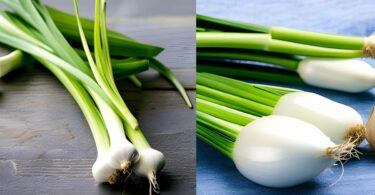
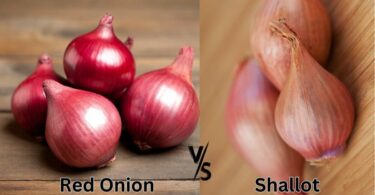
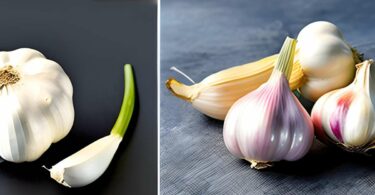
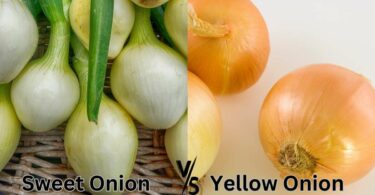
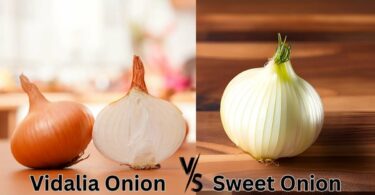

Leave a Comment